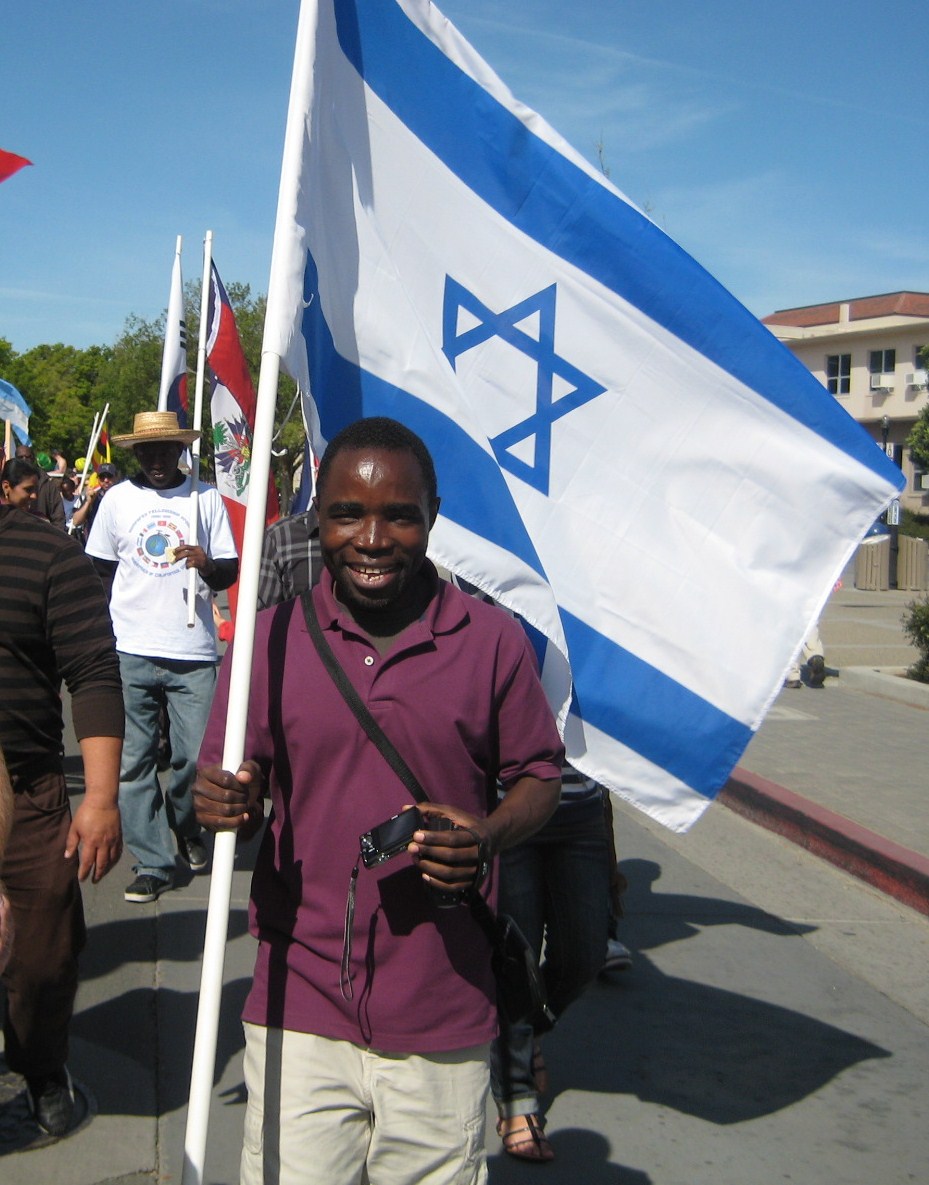Sunday
Yom Rishon
7 Kislev 5785
December 8 2024
May His Memory Be For A Blessing
Capt. Avraham Ben Pinchas, 24 from Harsha in Binyamin, a platoon commander in the 46th Battalion, “Iron Footprints” formation (401) under the Nahal Brigade, was killed in battle in southern Gaza on Friday. He leaves behind his parents and nine brothers and sisters.
Two months ago, Avraham was critically wounded with a head injury in Gaza. He recovered and immediately returned to his unit. He was killed when his tank was hit by an anti-tank missile fired by Palestinian Hamas terrorists.
According to the IDF Spokesman: “This incident demonstrates how the fighting in the Gaza Strip is going these days – even in areas like Rafah, where the IDF has been operating continuously for more than six months, there are still terrorist squads trying to ambush our forces with anti-tank missile fire, sniping, and IEDs.”
The View from Ashdod
Between 2 am and 4 am last night, we counted 10 booms per minute coming from Gaza.
Yes, you read that correctly.
10 explosions per minute.
More than 1000 booms just in that interval.
And many more throughout the night. One at 12:06 am in particular was heard throughout the country–all the way up to Tiberias and Haifa. It sounded like something exploded directly in front of our house and shook the house violently.
Apparently most of the bombing was in Jabaliya and Beit Lahia in northern Gaza. We are awaiting photos this morning to see if these two terror strongholds were turned into parking lots.
Good Morning from the Houthis, Again
At 06:41 this morning, we had what has become the morning wake-up call from Yemen with another ballistic missile fired toward central Israel. Fortunately, it was intercepted long before reaching the Israeli border–thus no warning sirens for falling shrapnel were sounded.
On the Ground in the North
*Hezbollah continues to violate the terms of the ceasefire agreement, and Israel continues to responding to every provocation.
*Only now are we finding out about Hezbollah’s array of attack methods prior to the ceasefire. According to a Bloomberg article yesterday, “Hezbollah launched missiles at the gas rigs, one of Israel’s strategic assets, before the ceasefire.” Chevron CEO Mike Wirth revealed at the Atlantic Council conference: “The naval Iron Dome system has proven its effectiveness in intercepting threats, and we have also dealt with attacks by autonomous underwater vehicles.”
Did you catch that?
Hezbollah had/has “autonomous underwater vehicles” (aka “underwater drones”).
And Israel has a “naval Iron Dome system.”
*In one attack yesterday, the IAF struck a Hezbollah convoy of armored vehicles as it retreated from the Syrian city of Qusayr near the Syria-Lebanon border. The IDF is focused on eliminating as many Hezbollah terrorists as possible who are trying to escape from Syria.
On the Ground in Judea and Samaria
The IDF Spokesperson:
“An IDF soldier was seriously wounded in a car-ramming attack in the Al-Fawar area in the Yehuda Brigade. The terrorist fled in his vehicle and many IDF forces, together with security forces, were deployed in the area and set up roadblocks. In addition, a cordon was imposed on Hebron and Dura.”
The manhunt continues.”
The War in Syria
As you undoubtedly know by now, the Syrian government has fallen; the rebels have taken Damascus, and President Assad is nowhere to be found (there are unconfirmed reports that his plane may have crashed in Syria last night). According to foreign publications, the IAF attacked strategic weapons depots of the Syrian army for fear that they would fall into the hands of the rebels and pose a threat to Israel.
With reports that the rebels have also taken Quneitra on the Israel-Syrian border in the Golan, the IDF entered sections of the buffer zone between Israel and Syria (the green area on the map below) last night.

At the same time, Israel told the rebels not to cross the 1974 ceasefire line, otherwise Israel will be forced to respond forcefully.
This morning, Division 98 along with the Paratrooper and Commando Brigades were deployed to the Syrian Border.
**Of course the events in Syria are dramatic and historic. The following unsigned article about the situation appeared on hamal online this morning–and describes the situation very well:
“The Fall of the Assad Regime is a Regional Earthquake”
“The fall of the Assad regime in Syria, following a week-long offensive by a coalition of rebel organizations, is a regional earthquake of historic proportions, adding to the severe war that has been taking place in the Middle East over the past year. The collapse of the Assad regime, the collapse of his army, and the rebel takeover of the country with almost no resistance bring an end to a 14-year civil war, but in the short term further destabilize Syria and the entire region.
In the longer term, the departure of the Assad regime could have dramatic consequences not only for Syria, but also for its allies: Russia, Iran and Hezbollah, which helped keep the Syrian president in power after the 2011 uprising. Bashar al-Assad was a key member of the pro-Iranian resistance axis. After his fall, Iran and Hezbollah could lose their main logistical hub for producing, transferring and storing weapons, training their forces and militias, and threatening another front against Israel. Without Assad, Russia could lose its grip on Syria – the only country in the Middle East where Russia has dominance over the US. The Russians could also now lose their bases in Syria that gave the Russian navy access to the Mediterranean.
The collapse of the regime marks the end of the secular Baath Party in Syria – and the end of more than five decades of rule by the country’s Alawite minority. The collapse of the regime also marks the end of 58 years of rule by the Assad family in Syria, which began when officer Hafez al-Assad seized power in a coup in 1966 and declared himself president five years later. His son, Bashar, succeeded him after his death in 2000. The son, who was initially seen as a great promise for change in Syria, quickly turned out to be a more terrible dictator than his father.
Assad’s fate is still unclear. On Sunday morning, shortly before the rebels entered Damascus, Reuters reported that he had left Damascus for an unknown destination. Aircraft tracking sites identified a Syrian Airlines plane that took off from Damascus north, but disappeared from radar shortly afterwards – after a rapid drop in altitude. The one who stepped in in his place was the prime minister of his regime, Muhammad Razi al-Jalali, who declared that he was not leaving Syria and emphasized his willingness to carry out a peaceful transfer of power.
Israel is very concerned about the uncertainty in Syria. In the first phase, the intention seems to be to strengthen the defenses on the Golan Heights border to ensure that the chaos in Syria does not spill over into Israel. Israel is in direct contact and through intermediaries with several rebel groups, including HTS. The Israeli message at this stage is a demand that the rebels not approach the border and a warning that if they violate the separation of forces agreement, Israel will respond with force.”
—–
One final note this morning expressed well by Knesset member Amichai Shikli:
“The events in Syria are far from being a reason to party. Despite the rebranding of Hayat Tahrir al-Sham and its leader Ahmed al-Shara, the bottom line is that most of Syria is now under the control of affiliate organizations of al-Qaeda and ISIS.
The good news is the strengthening of the Kurds and the expansion of their control in the northeast of the country (Deir ez-Zor region). Operationally, Israel must renew its control at the peak of Mount Hermon and establish a new defense line based on the 1974 ceasefire line. Jihadists must not be allowed to establish themselves near our communities.”
And so it goes in Israel (and surrounding areas) this morning . . . so far.



 A student from Malawi, who had worked with an Israeli health volunteer in his country battling AIDS, came up to us as we walked down the street in the UC-Davis Picnic Day Parade and wanted to carry the Israeli flag.
A student from Malawi, who had worked with an Israeli health volunteer in his country battling AIDS, came up to us as we walked down the street in the UC-Davis Picnic Day Parade and wanted to carry the Israeli flag.